Summary
The Center for Collision Safety and Analysis (CCSA) at GMU is focused on using advanced technology to understand collisions involving transport vehicles and to develop means to avoid or mitigate them to enhance safety and security.Information
Website: ccsa.gmu.edu/
Email: cdkan@gmu.edu
Phone: 703.726.8511
Address: Commerce Building
4087 University Drive, Suite 2100
Fairfax, VA 22030
About
Collision Safety & Analysis
Collision Safety and Analysis is about understanding events where objects collide or crash, the nature of the impacts, correlations to outcomes, and potentials for mitigating the consequences. For example, when vehicles on the road collide, there is risk of injury/death to the occupants of the vehicles, deformation of the vehicles, redirection of vehicles into other traffic, and/or damage to elements of the highway infrastructure.
Safety analysis involves evaluating the crash energy from an impact at a given angle and speed, the distribution of impact forces, the dynamic tolerances of the occupants or hardware, and design features to absorb or dissipate the crash energy of the vehicle and the highway infrastructure. Concepts of physics, materials science, biomechanics, and engineering supported by high-performance computer tools provide the basis for various types of safety analyses related to collisions.
The analyses can involve any type of vehicle or components thereof. For example, the same advanced computational methods used to analyze the impact between vehicles on the road can be applied to analyze the consequences of a ruptured fan blade ejected from a jet engine on the occupants of an airliner.
Collision analyses also applies to efforts to enhance security by preventing damage to critical elements of the transportation infrastructure or thwarting intrusions into building or other facilities. The members of the CCSA Team have undertaken research on these topics and others and stand ready for other challenges to make transportation safer and more secure.
Mission
The mission of the Center for Collision Safety and Analysis is to advance collision safety though scientific research using sophisticated computational methods that provide a means to establish a sounder understanding of collision dynamics, likely effects on the users, vehicles, and infrastructure system elements, and potential effectiveness of mitigation options.
This understanding allows for better design, analysis, evaluation and deployment of means to mitigate collision effects across a broad spectrum of impact conditions, vehicle types, design features, technological options, and environmental conditions.
Goals & Objectives
The overriding mission of the CCSA is to advance the knowledge and technologies for collision analysis for transportation safety/security, to train the next generation of professionals in collision analysis, and to provide a forum for collaboration between the government, industry, and academia to enhance transportation safety and security. The objectives of the CCSA program include:
- Conduct advanced research to assist researchers and engineers in resolving transportation safety and security issues by expanding knowledge about crashes and the means to mitigate adverse outcomes.
- Develop and validate detailed finite element vehicle and hardware models to support advanced computational methods and lead efforts to apply these models in computer simulation tools to study the complex interactions associated with collisions.
- Advance the application of science and advanced computational methods for collision safety and analysis across all aspects of transportation.
- Support a repository for collision analysis information including crash test films, analyses documentation, models, and simulation results.
- Conduct impact testing to validate computer models and produce relevant data for crash analysis to improve highway and vehicle safety.
- Promote broad approach toward recognizing current and emerging safety and security issues and the potential insights and solutions that can be generated through Collision Safety and Analyses.
- Collaborate with the NCMS and other centers to support advanced research and product design and advancement of tools and methods for extended capabilities to address safety and security issues.
- A key facet of the CCSA Mission will be the sharing of findings, data, models, and technologies to expedite efforts to address complex safety problems. The CCSA team brings to Mason decades of experience and numerous accomplishments in the safety field.
Focus
The focus of the Center will initially be on Highway and Vehicle Safety as more than 32,000 fatalities and an estimated 2.34 million people were injured
in the United States in 2014. This constitutes one of the greatest public health and societal concerns in the country.
These numbers have remained high despite concerted efforts to regulate vehicle designs, build safe roads, train drivers, enhance risk awareness, enforce traffic laws, and require crashworthy road hardware. This safety problem is global with considerably higher numbers of fatalities and injuries in other parts of the world.
While serious strides are being made in crash avoidance and other technologies that will promote safety, widespread deployment will take decades and the need for collision safety and analysis will still exist for the vehicle and highway designs to be “fail safe.” Collision safety issues also are common to other modes of transportation and analysis methods are applicable.
Security is an extension of safety that has also been addressed by collision analysis. Advanced computational methods have been used to determine the requirements for anti-ram barriers to protect buildings and other facilities.
Research Focus
Vehicle Collision Safety
The CCSA team has more than 60 person years of experience in the development of finite element (FE) models of vehicles through reverse engineering. We have created more than 15 vehicle models over the last twenty years. We have advanced the techniques such that more detailed models are generated in shorter periods of time. We have led significant efforts to verify and validate the models to assure their viability for all types of impact analyses.
The team has used these FE models to undertake a variety of simulations to analyze collision effects, study occupant risks for different types of collisions, analyze bumper compatibility in vehicle-to-vehicle crashes, assess means to measure the effectiveness of safety design features (e.g., Safety Energy Absorbing Structures), and investigate the safety implications of future design features (e.g., smaller sizes, use of lightweight materials). This effort includes the maintenance of an extensive array or FE models.
Highway/Roadside Safety
The CCSA team has pioneered efforts to improve roadside safety through the use of advanced computational methods. We have developed dozens of FE models for all kinds of barriers, end treatments, and break-away safety hardware. These have been used to analyze effectiveness under varying impact conditions, assess placement guidelines, and investigate failures.
The CCSA team was the first to model cable barrier systems and used simulation to develop guidelines for the effective placement of barriers on roadside slopes. Simulation analyses have been used to evaluate hardware designs, assess the use of new materials, and evaluate crashworthiness for new barriers as well as improvements to existing hardware designs. The team has also conducted numerous crash tests to capture data for model formulation or to validate simulation findings.
Infrastructure Security
The CCSA has capabilities and experience in the analysis and evaluation of infrastructure security treatments including various types of walls, fences, gates, planters, and barriers. These anti-ram barriers were modeled to allow simulation of impacts by loaded trucks at speeds up to 50 mph. Repetitive simulations were used to optimize designs to assure constructability with available materials and minimize the intrusion upon other aspects of urban environments.
The designs that evolved from the analysis were tested in accordance with State Department or other testing standards to validate effectiveness before being approved for widespread use. Evaluation efforts also included considerations of combinations of barriers, the effectiveness of temporary barriers, and the protection of critical bridge supports from large, high-speed errant vehicles (e.g., bridge abutments).
Occupant Risk Analysis
CCSA efforts included extensive research on vehicle occupant kinematics and injury patterns in collisions. This has covered all types of occupants, positions, and safety devices for the full spectrum of crashes, such as frontal offset, frontal oblique, side impact, and long duration rollover configurations. The team has modeled crash dummies (e.g., Hybrid III and WorldSID), studied effectiveness of restraint systems and child safety seats for varying collision types, and developed an integrated vehicle safety model that facilitates the analysis of restraint systems for various types of impacts.
These efforts often involved deep mining of the NASS CDS, NCAP, and consumer crash test results to identify serious occupant risk issues, validate simulation efforts, and assess potential mitigation options. The application of biomechanics principles and results from injury-based datasets (e.g., CIREN) has led to the identification of the relationships between crash types and likely injuries that has been integrated into emergency response protocols.
Crash Data Analyses (Mining)
The team has undertaken numerous in-depth analyses using various publically available crash datasets. Recent efforts have focused on analyzing factors related to the influence of barriers on rollover crashes, causes of motorcycle crashes, and the nature of impacts into barriers on curved, superelevated roadway sections. A wide array of statistical and graphical means to analyze the data has been employed in efforts to understand crash causation.
The CCSA team has managed the extensive government crash data library and provided critical data to researchers around the world. Management of this knowledge is critical to building upon past efforts to a more complete understanding of collisions and their effects. The findings have often provided the impetus for modeling and simulation of specific types of collisions to better understand the relationship between vehicle structures, collision forces, and occupant risks that led to proposed automotive safety regulations.
Impact & Vehicle Testing
The use of advanced computational methods requires various types of impact testing, including full‐scale crash tests to capture data needed to formulate mathematical models and/or to validate the results predicted by simulation. The CCSA team has managed one of the nation’s major facilities for such testing and conducted hundreds of tests over the last twenty years. These tests have included dynamic impacts of vehicle and barrier components using a pendulum and full‐scale car and truck tests up to 70 mph.
Recent testing has included efforts to analyze vehicle dynamic response and handling on sloped terrain. In these efforts, a variety of devices were used to capture detailed data and imagery of the crash events. The team has demonstrated proficiency in the test set-up and execution for a full spectrum of unique research needs under ISO-based protocols.
Material Characterization & Modeling
Material characteristics greatly influence collision outcomes. The CCSA team has conducted research to develop computational models for various materials and used traditional and innovative materials in the development of hardware for the mitigation of collision forces. These have included modeling windshield glass and characterizing the metals used in vehicles based upon coupon tests in reverse engineering.
Recent efforts have assessed the viability of plastics and composite materials to reduce vehicle weights. These efforts have applied materials science to improve components of vehicles and barriers. Material models have allowed simulation of the collision performance of vehicles and advanced material components. The team has worked to integrate new material models into the multi‐physics code, LS‑DYNA.
Vehicle Dynamics Analyses
The CCSA team has become recognized as experts in the application of vehicle dynamics analysis tools in the understanding of the vehicle-to-barrier interface in collisions. Since vehicles are a sprung mass, the interface is influenced by vehicle mass, speed, orientation, and surface features. Recent efforts led to guidelines for the effective lateral placement of cable barrier systems on highway medians and the influences of curved, superelevated roadway section.
The team has also been involved in the assessment of handling response of production hybrid vehicles through simulation and field testing. The team is currently involved in research aimed at formulating a realistic dynamic test to evaluate roof crush strength for new vehicles.
Computational Methods & Technology
CCSA efforts have included research that produces benchmarks for testing simulation software, development and testing of new algorithms in simulation software, the formulation of material and failure models, and evaluations of alternative simulation methods. These have advanced the tools and techniques available for continued application of computational methods in collision safety and analysis.
The team contributed to recent efforts to develop protocols for the verification and validation of simulation results against crash test data. Initial efforts involved beta testing of the support software and later efforts aimed to assess the consistency and relevance of the metrics generated by the procedure. Recommendations were generated to enhance the protocols as well as improve the production of the comparative summaries.
Academic Program
The CCSA faculty and program areas will support an academic program that will train students to apply advanced computational methods to address complex safety and security problems.
The program is under development, but will offer graduate degrees in advanced safety analyses & engineering and elective courses that supplement degree programs in engineering, statistics, science, and public safety. The program will seek every opportunity to involve students at all levels in the research to provide practical hands-on experience to supplement their education.
Degree Programs
In the Spring of 2014, the Center will support a Master’s degree program in Transportation Safety Science and Engineering. This program will provide students with a robust education in science and engineering for the analysis of safety issues though the application of advanced methods and technologies. It will include course options in safety data mining, vehicle dynamics, highway and barrier design, and strategies and opportunities for the systematic identification and mitigation of safety deficiencies. Courses will be taught by the faculty associated with the Center and provide both the theoretical underpinnings as well as practical insights gained in years of work in industry and research. Students will have opportunities to participate in research at the Center as well formulate projects to address real problems as thesis or dissertation projects. The degrees will be tailored to meet requirements for degrees through other Mason Colleges & Schools. The intent is to produce graduates that will be readily able to move into careers in the public and private sectors. Future plans are to support other advanced degrees through the Center.
Professional Development / Continuing Education
The CCSA will provide various learning opportunities to Mason students, local professionals and agencies, and even the national and international safety community. These include:
- Rich educational opportunities for graduate students pursuing unique Transportation Safety Science and Engineering degrees at Mason.
- Professional Development Programs to enrich working professionals in their efforts to understand collision safety and analyses and apply to enhancing safety and security.
- An environment for visiting scholars and exchange students to interact with the CCSA research team and to conduct research using the wealth of data and facilities available.
- Working relationships with industry in pursuit of improved highway and vehicle safety to demonstrate the potentials of scientific and analytical approaches to improve transportation safety and security.
- Continuous papers and presentations to professional and research forums to advance the state-of-the-art and improve engineering practice.
- Distance learning options will evolve through the program to allow the advanced methods for collision safety and analyses to benefit all those endeavoring to improve transportation safety and security.
Student Involvement
The Center for Collision Safety and Analysis will promote the development of the next generation of professionals in safety and security by offering classes, programs, and activities specifically oriented to interested students. The CCSA faculty will take an active role in teaching at all levels and will serve as academic advisors for student thesis and dissertation efforts. Opportunities include team taught classes in Science and Engineering curriculums that will focus on the applicability of the concepts and technologies. For example, classes in the Transportation Engineering program (in the Department of Civil, Environmental, and Infrastructure Engineering) could demonstrate how highway crashes occur and barriers are selected to mitigate the consequences. Classes in Physics might be useful to demonstrate the application of dynamic impact theory and the nature of tools used to analyze the effects under varying conditions. Directed studies, uniquely designed degree programs, guest lectures, visiting faculty, and student projects will provide abundant opportunities to enhance learning at George Mason University. Contract research efforts will also provide opportunities to support students while they pursue their degrees and provide hands-on learning through roles on the research teams.
The research capabilities of the CCSA Team are rooted in their educational backgrounds and collective experience and accomplishments in past endeavors. They are also based upon their track record in competing for large and small contracts with a variety of sponsors and successfully completing various efforts under these contracts. The Team’s accomplishments have been significant in their breadth of topics covered, global scope, and cutting-edge influences. A brief overview of these aspects of the CCSA capabilities and accomplishments are provided in this section.
Accomplishments
The Center for Collision Safety and Analysis people can boast of many significant accomplishments. While CCSA may have just joined George Mason University, in previous venues working together they can rightfully claim the accomplishments noted below.
Vehicle Modeling
- Developed & validated FE vehicle models in collaboration with NHTSA, including 1994 Chevy C2500 pick-up, 1998 Geo Metro, 1996 Dodge Neon, 2005 & 2006 Ford F250, 2003 Ford Explorer, 1997 Toyota RAV4, 2001 Ford Taurus, 2007 Chevrolet Silverado, 2010 Toyota Yaris, and 2012 Toyota Camry.
- Developed new methodologies for building detailed FE models (e.g., Chevy Silverado) and conducted extensive validations of the model which included comparisons to NCAP frontal impact tests, inertial properties, and nondestructive suspension response tests.
- Developed new validation tests and worked to apply proposed verification and validation protocols to recently developed models to bolster confidence in the models.
- Established protocols for the testing of materials samples and documentation of FE models.
Roadside Safety Analyses
- Developed finite element models for guardrails, concrete safety shapes, transitions, end treatments, sign supports, breakaway devices, cable barriers, and mailboxes.
- Demonstrated the viability and potentials for using crash simulation in the analyses of the safety performance of all types of roadside hardware.
- Analyzed the effects of guardrail height on safety performance through parametric analyses of varying rail heights using simulation and confirmed the results with full-scale tests.
- Formulated guidelines for the effective slope placement of roadside hardware to optimize positive interface between vehicles and barriers using vehicle dynamics analyses.
- Investigated the interface effectiveness implications of lateral placement of cable median barriers through pioneering applications of vehicle dynamics analysis tools.
- Analyzed effective combinations of shape, length, connections, and other design elements for portable concrete barriers to optimize work zone deployment.
- Evaluated the impacts of proposed new roadside hardware crashworthiness criteria by comparisons of similar impacts with the previous and proposed vehicles (i.e., adding mass).
- Simulated and tested the influences of terrain on the trajectories of vehicles that have left the roadway to understand the effects on crashes.
Vehicle Safety
- Analyzed vehicle-to-vehicle compatibility using crash simulation for front-to-front and front-to-side impacts.
- Conducted vehicle bumper compatibility studies for NHTSA to evaluate structural interaction between passenger cars varying classes of light truck vehicles.
- Developed a load wall design to accurately measure “height of force” for NCAP frontal tests to assess vehicle interaction compatibility.
- Evaluated override barrier design to detect Safety Energy Absorbing Structures in light truck vehicles.
- Analyzed performance of child safety seats in various positions for varying sized children.
- Modeled and evaluated of vehicle roof crush performance to assess alternative proposed dynamic testing approaches.
Crash Data Analyses
- Conducted a comprehensive analysis of motorcycle crashes using FARS & NASS GES data.
- Linked NCAP test data with FARS crashes to assess stiffness effects on crash severity.
- Investigated characteristics of multiple impact crashes that produce serious injuries.
- Used CIREN data to assess the performance of second generation airbags.
Computing & Simulation Technology
- Pursued enhancement of computer technology to speed up crash simulation processing.
- Tested new software elements for LSTC and established computer performance benchmarks.
- Maintained expertise in LS-DYNA and associated pre- & post- processors, MADYMO, HVE, CarSim, and other software.
- Provided benchmark models for the evaluation of computational accuracy, reliability, and consistency in LS‑DYNA and high performance computer hardware.
People

cdkan@gmu.edu
Room 2113
(703) 993‒5898
Dr. Cing-Dao (Steve) Kan, Professor and Director of CCSA
- Ph.D., Mechanical Engineering, University of Maryland 1990.
- Expertise in finite element analyses of solid objects and structures.
- Pioneering research on implementation of non-linear, explicit FE code on high performance parallel computer platforms and development of benchmarking criteria.
- Previously Director of the National Crash Analysis Center under contracts with FHWA and NHTSA that led to the development of ten FE vehicle models, multiple crash tests, outreach programs to support use of simulation methods, and studies of safety implications for future vehicle designs.
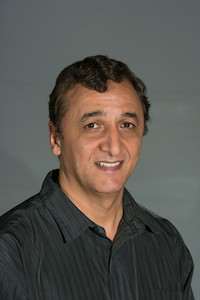
dmarzoug@gmu.edu
Room 2114
(703) 993‒4680
Dr. Dhafer Marzougui, Associate Professor and Research Director of CCSA
- D.Sc., Transportation Safety Engineering, The George Washington University 1996.
- Internationally recognized expertise in vehicle modeling, crash simulation, development and evaluation of infrastructure security hardware and impact testing.
- Led NCHRP projects to develop guidelines for effective placement of cable barriers on sloped medians of varying configurations and barriers on curved, superelevated roadway sections.
- Developed FE models of vehicles, barrier hardware, test “dummies,” and aircraft to simulate crashes and dynamic effects on occupants.
- Previously Associate Director of the National Crash Analysis Center.

ckpark@gmu.edu
Room 1111
(703) 993‒4595
Dr. Chung-Kyu Park, Assistant Research Professor
- Ph.D., Transportation Safety Engineering, The George Washington University 2010; BE & ME Naval Architecture.
- His research led to an improved method for Generalized Mesh-Free (GMF) approximation and investigations of its dispersion property.
- Studied crash compatibility issues at SAFER – Vehicle and Traffic Safety Centre, Gothenberg, Sweden.
- Broad experience in the training and application of LS-DYNA at Korea Simulation Technology.
- Simulated dynamic effects on ship structures at Korea Maritime University.

reichert@gmu.edu
Room 1117
(703) 993‒4565
Rudolf Reichert, Assistant Research Professor
- Advanced engineering degrees from universities in both Germany and the USA.
- Expertise in the development of occupant safety systems from roles with Mercedes and other automotive firms.
- Considerable experience in linking simulation and testing to develop occupant protection systems and validate effectiveness.
- Developed integrated vehicle model for comprehensive occupant safety analyses over a broad set of impact types and conditions.
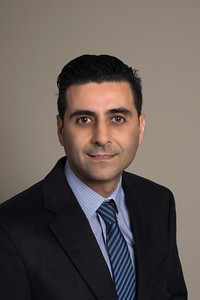
tahan@gmu.edu
Room 2120
(703) 993‒4633
Dr. Fadi Tahan, Assistant Research Professor
- D.Sc., Transportation Safety Engineering, The George Washington University .
- Research endeavors have focused on modeling vehicle rollovers for establishing protocols for dynamic rollover assessment, understanding influences of highway features on vehicle crashworthiness, and perform crash data analysis using NASS CDS.
- Experience in developing and applying FE models in the automotive industry in Detroit (2005–2009).

dbrown29@gmu.edu
Room 1007
(703) 993‒4614
Dan Brown, Research Associate, Manager of CCSA Vehicle Digitization Lab
- B.A., Journalism, California State University of Sacramento.
- Manages the Vehicle Modeling Lab which used reverse engineering processes for development of seven FE vehicle models.
- Expertise in reverse engineering, automotive design, and FE geometry and meshing and material characterization.
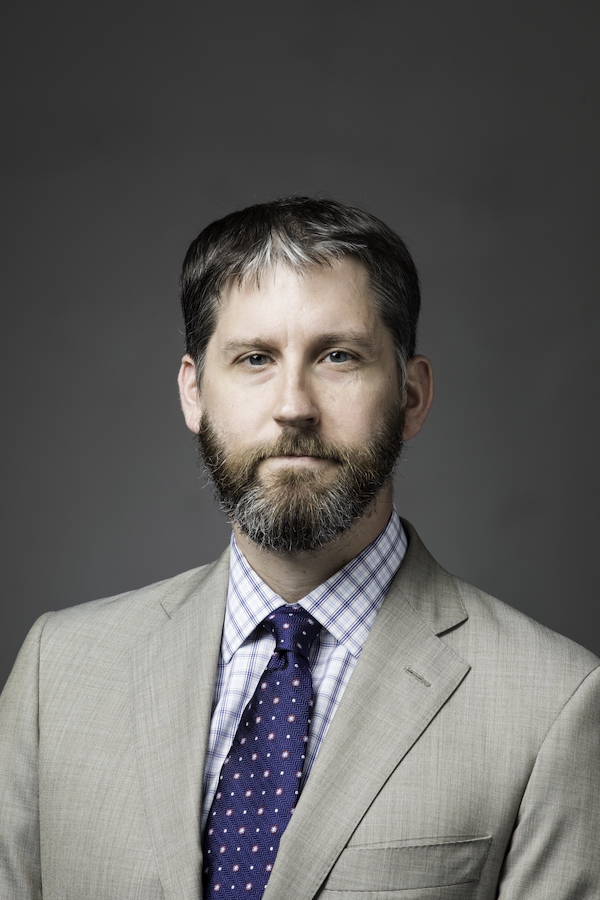
jmader2@gmu.edu
Room 2123
(703) 993‒4619
Jason Mader, Computer Systems Manager
- B.S. and M.S., Computer Science, The George Washington University.
- Expertise in network, storage, and administration of high performance computing systems.
- Optimized systems for simulation workflow, customized software and operating system installation, granular configuration, and focused on systems availability to minimize the interruption of long running computer simulation tasks.

sdolci@gmu.edu
Room 1115
Stefano Dolci, Research Associate
- M.S., Aeronautical Engineering, Politecnico di Milano (Italy).
- He has 5 years of experience in the areas of computer simulation of structures, mathematical and analytical modeling, and testing for crash analysis.
- Over the past 3 years, Stefano supervised various tests at the Federal Outdoor Impact Laboratory.
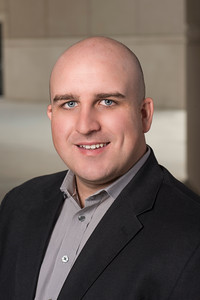
shaight@gmu.edu
Room 2115F
Sean Haight, Doctoral Student
- B.S., Mechanical Engineering, Texas Christian University; M.S., Transportation Safety Engineering, The George Washington University.
- Recipient of George Mason University Presidential Fellowship.
- Crash Test Engineer at the Collision Safety Institute with responsibility for planning, executing, and documenting tests. Expertise in impact analyses software tools.
- Senior Editor for Collision Magazine.

ctellis@gmu.edu
Room 2100
(703) 993‒4694
Cheriden Tellis, Administrative and Student Support
- B.S., Psychology, University of Mary Washington.
- Prior to working with CCSA, she worked as an administrative assistant for the Prince William Campus Executive Office of George Mason University.
- Has worked for the University of Phoenix as a resource specialist.
- Completed a recruiting/human resources internship with the Walt Disney Company in Orlando, Florida in 2008.
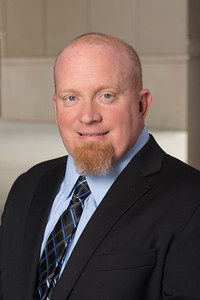
cstory2@gmu.edu
TFHRC FOIL
Christopher Story, Senior Test Technician
- Joined the Federal Outdoor Impact Laboratory in 2002, currently as the Senior Accredited Test Technician.
- Expertise in preparing test vehicles and installing accelerometers, gyros, strain gauges, string pots, and data acquisition systems on vehicles and barriers for crash testing.
- Experience in project management, such as installation of roadside and perimeter security barriers.
- Responsible for maintaining and operating NAC high speed imaging and Messring vehicle propulsion systems.
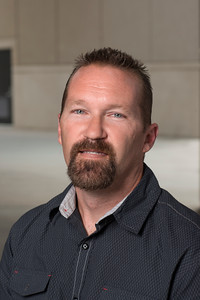
mmosser@gmu.edu
TFHRC FOIL

